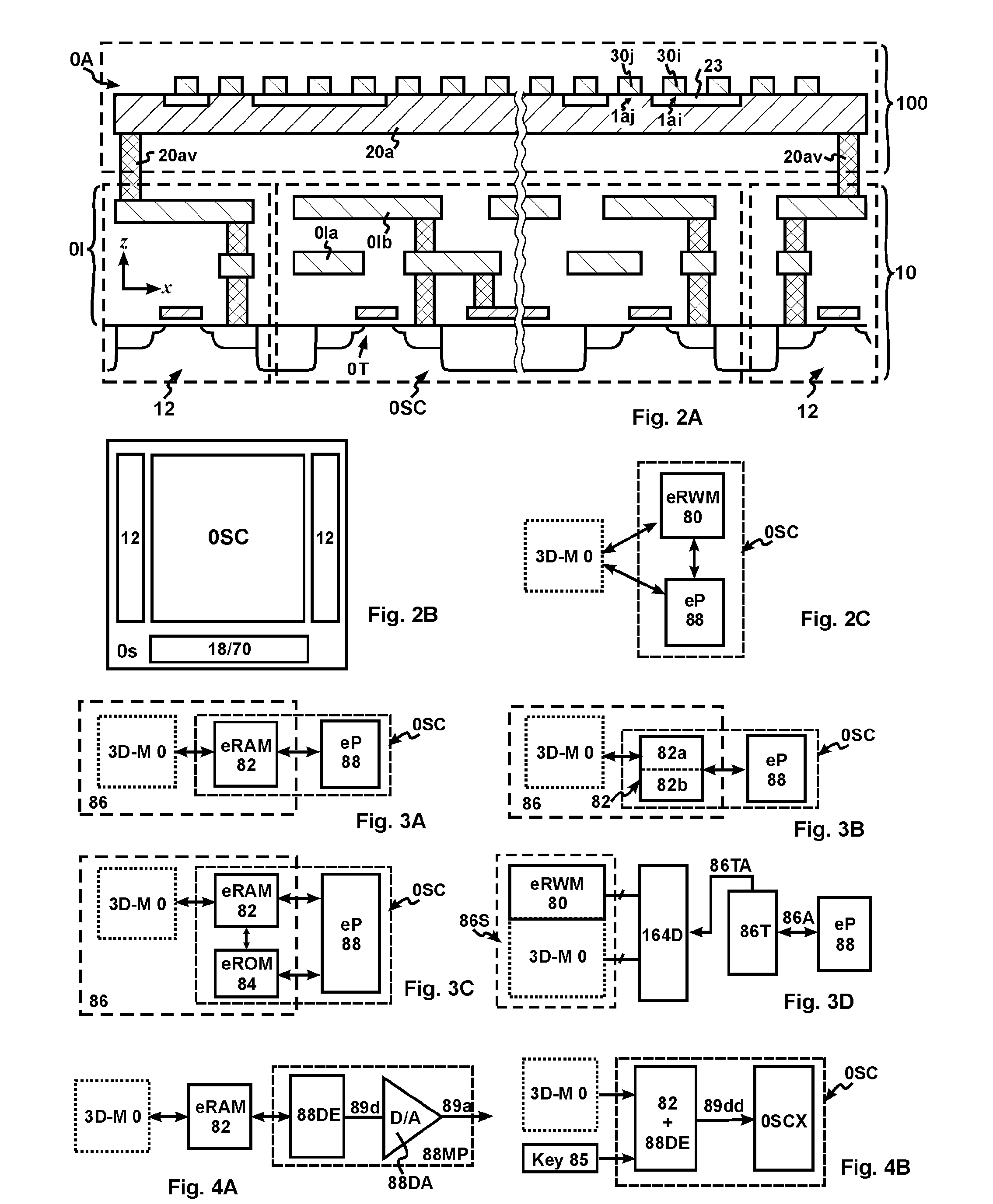Three-Dimensional Memory Cells
a three-dimensional memory and cell technology, applied in memory systems, transistors, instruments, etc., can solve the problems of high power consumption of logic and/or analog blocks, many heat dissipation issues in three-dimensional integration of these blocks, and low yield of three-dimensional memory, so as to improve data security, speed, yield and software upgradability, the effect of improving the integration of three-dimensional memory
- Summary
- Abstract
- Description
- Claims
- Application Information
AI Technical Summary
Benefits of technology
Problems solved by technology
Method used
Image
Examples
Embodiment Construction
[0075] 1. Three-Dimensional Integrated Memory (3DiM)
[0076]FIG. 2A is a cross-sectional view of a 3DiM. In a 3DiM, 3D-M array 0A is integrated with substrate circuit 0s. 3D-M array 0A comprises one or more three-dimensional (3-D) memory level 100. Each 3-D memory level 100 comprises a plurality of address-selection lines (20a, 30i . . . ) and 3D-M cells (1ai . . . ). The address-selection lines comprise metallic material and / or doped semiconductor material. Transistors OT and their interconnects (01a, 01b . . . ) form substrate circuit 0s. From a circuit perspective, substrate circuit 0s comprises a substrate-IC 0SC and address decoders 12, 18 / 70. These address decoders perform address decoding for the 3D-M array 0A. Contact vias (20av . . . ) provides electrical connection between the address-selection lines (20a . . . ) and the substrate circuit 0s (e.g. address decoder).
[0077] In certain applications, the address-selection lines in the 3D-M prefer to comprise poly-crystalline se...
PUM
 Login to View More
Login to View More Abstract
Description
Claims
Application Information
 Login to View More
Login to View More - R&D
- Intellectual Property
- Life Sciences
- Materials
- Tech Scout
- Unparalleled Data Quality
- Higher Quality Content
- 60% Fewer Hallucinations
Browse by: Latest US Patents, China's latest patents, Technical Efficacy Thesaurus, Application Domain, Technology Topic, Popular Technical Reports.
© 2025 PatSnap. All rights reserved.Legal|Privacy policy|Modern Slavery Act Transparency Statement|Sitemap|About US| Contact US: help@patsnap.com



